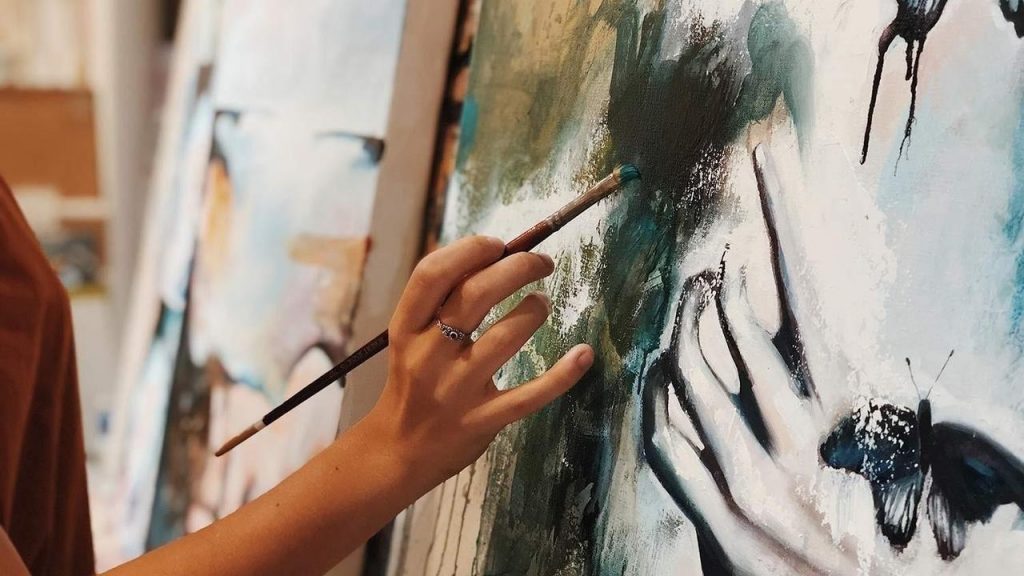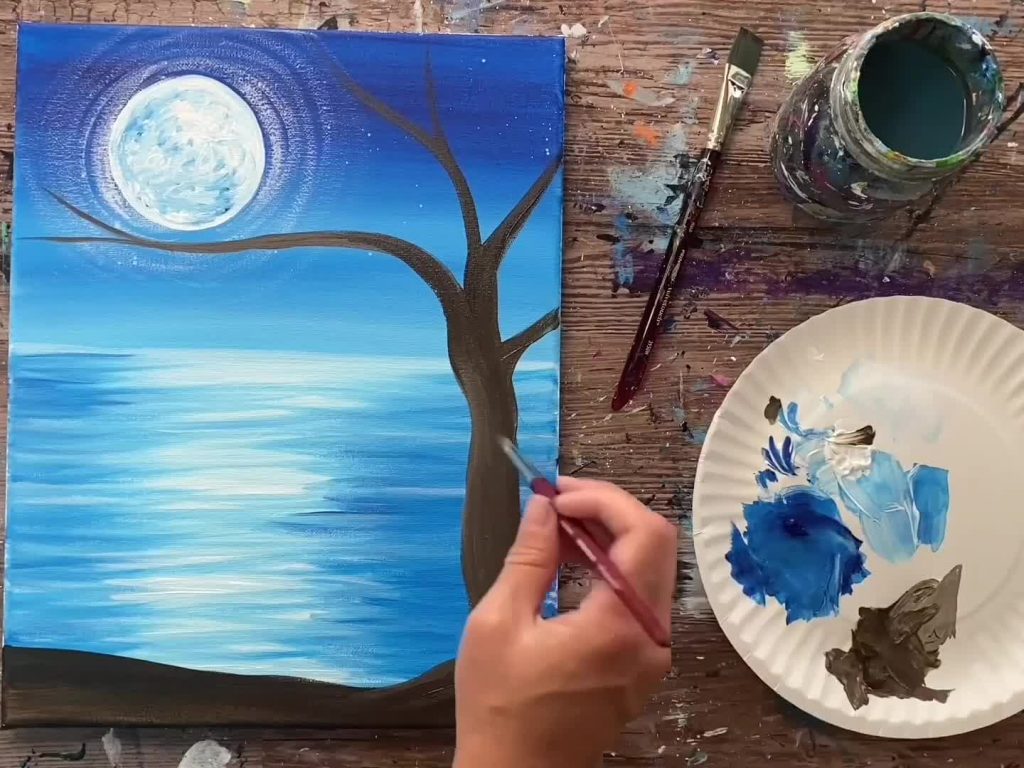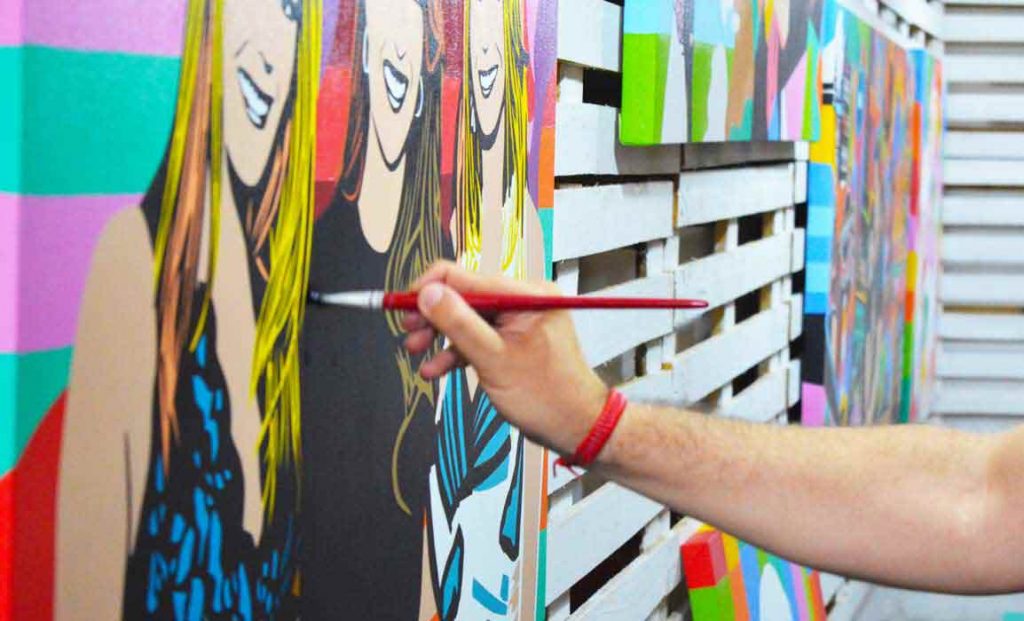Canvas has been used by artists for thousands of years to express their creativity, and it continues to be the preferred surface for both novice and expert painters, particularly for acrylic painting. Canvas is a flexible painting surface that is available in a wide range of shapes, sizes, and forms to accommodate any demand and budget.

Canvases and canvas panels in a wide range of sizes and forms are now easily available online and at specialised brick-and-mortar stores. Let’s explore the various canvas kinds and how to go about selecting the one that will perform best for you.
Why Use Canvas?
The canvas’s versatility in terms of size means it can be used for anything from small paintings to big, vast works. But the two primary reasons why canvas is so well-liked by painters are how nice it feels to paint on it and how long-lasting it is. Traditional wood surfaces, which were previously frequently utilized, are significantly heavier and more difficult to move than canvas.
How Do I Choose the Right Canvas?
Nowadays you can purchase canvas for painting in a variety of forms and sizes to accommodate a range of needs and price points. Stretched canvas, canvas panels, canvas pads, and canvas rolls are the basic varieties.
Types of Canvas
Stretched Canvas
One of the most common varieties of artist canvas for acrylic painting is stretched canvas, which is a canvas that has been stretched over a wooden frame known as stretcher bars. The canvas, which is most frequently composed of cotton, is prepped with gesso to give the best surface for painting.

Before you purchase canvas for painting make sure you choose the correct type because they are primed for either acrylic or oil painting. Different sizes and thicknesses of frames are available; they are either deep (thicker) or traditional (thinner). The choice of frame typically depends on how the painting will be presented; if it will be framed, a traditional thickness is preferable, while deep frames are better for paintings that won’t be framed or if you want to add complexity to the canvas’ sides.
Canvas Panels
Canvas panels are a quality, more cost-effective substitute for stretched canvas, which can be a bit pricey, especially for novices. These practice panels consist of solid boards attached to primed cotton fabric. They are lightweight and portable, making them ideal for students. Although canvas panels provide a surface of approximately equal quality to stretched canvas, they don’t age as well and are therefore primarily used for practice.
Canvas Pads
Canvas pads, which are sheets of primed canvas spiral-bound in a book, are another popular type of canvas. Although many pads’ sheets can be extended or mounted, they don’t survive as long as stretched canvas, similar to canvas panels. Canvas pads are great for beginners, students, or practising purposes.
Canvas Rolls
Canvas rolls are a great option for those looking to create very large paintings or those who prefer to prepare and stretch their own canvas. Canvas rolls are available primed or unprimed, in a variety of weights, textures, and fibres, and are either composed of cotton or linen. They are typically sold in rolls or by the yard, which can be rather expensive.
What Makes a Good Canvas?
There are many factors to take into account while choosing a canvas for paint, including the fabric, texture, and priming. Each of them has an impact on the canvas’s quality and the type of painting it is best suited for.
Fabric
Most canvases are made of cotton or linen fabric. Linen fabric is considered the best of the two as it has a better surface quality and is also more durable. However, these qualities come with a price, so you’ll have to pay more for it. Cotton, on the other hand, is a more cost-effective solution that offers a good surface that is suitable for durability.
Texture

Natural fibres are woven together to create the canvas, which can have a variety of textures depending on the level of weaving. Diverse forms of painting call for different textures. Rougher weaves work best for larger, more expansive paintings whereas smooth surfaces of the finely woven canvas are best for smaller, more intricate work.
Prime or No Prime
Most canvases are primed with gesso (pronounced “jesso”), a mixture of plaster of Paris, glue, chalk, or pigment, to create a surface that will expose the true colours of the paint and prevent the paint from being absorbed into the canvas’ fabric. While most canvases are primed, some painters prefer to utilize unprimed because of the grainy, dull hue they generate.
Here are some things to keep in mind while buying a canvas:
- Check the calibre – Examine the canvas for flaws that will be challenging to conceal.
- Search for dents, sagging, loose, or discoloured material – See if the canvas is attached to the back and wraps around the sides.
- Pay attention to the priming layers – At least two coats of acrylic primer should be applied to the canvas, but more is preferable.
- Verify the stretcher bars’ quality – Stretcher bars need to be sturdy and not overly thin.
- The main consideration for a new artist buying art supplies is frequently the price of products – You don’t want to spend a lot of money on a canvas and then find out that painting isn’t for you. So, start with more affordable canvases and then switch to more expensive types as you gain more confidence.
























